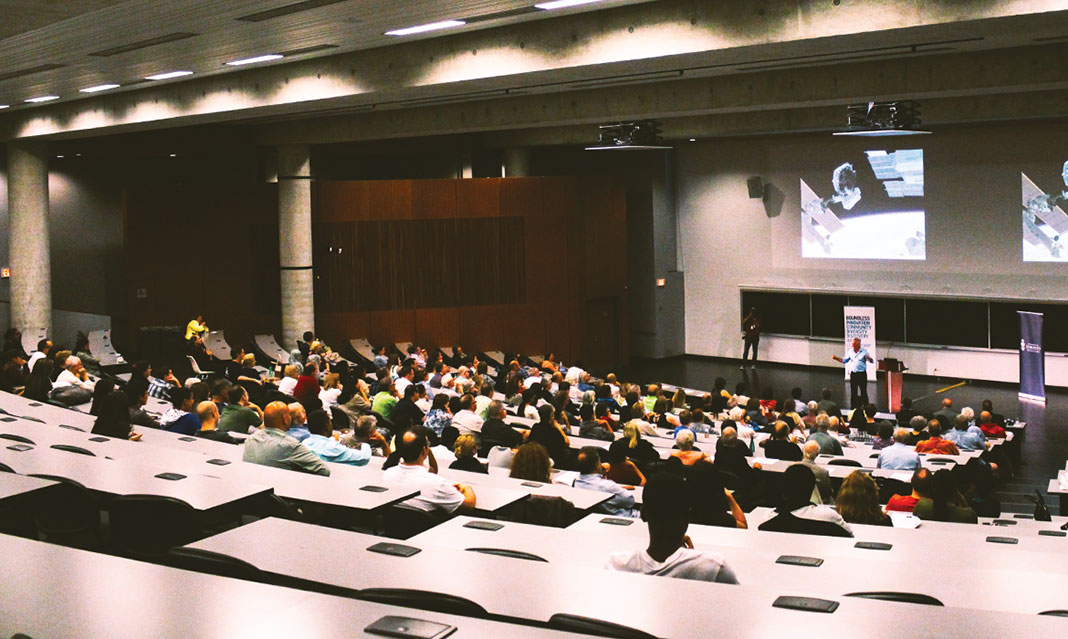This week we have a piece in our features section on four undergraduate students who took a trip to Hokkaido, Japan with Dr. Gary Crawford, a professor in UTM’s anthropology department. Reading this had me thinking about opportunities here at UTM to learn beyond the lecture hall.
UTM does offer a variety of opportunities for students to embark on trips, and excursions related to learning. However, it feels that these opportunities are either hard to find or just non-existent at times.
During my undergrad in criminology, it felt as though my duty was to focus purely on my hundreds of pages of readings, and expect to learn through that. Now, I may just not have been as involved as I should have been, however it took four years before I actually had the chance to be involved in my field of work practically.
You remember back in elementary school when they’d teach us about the different kind of learners? There were visual, auditory, and kinesthetic learners, kinesthetic being the practical learner type. These styles of learning are most commonly emphasized in teacher’s colleges and various leadership programs. Students are typically split into one of those three learner types. While it is mentioned that students can be a mix of all three, I find that universities still tend to adhere to learners that are visual/auditory.
This isn’t necessarily a terrible way of teaching, however, I thoroughly believe that everyone falls into the kinesthetic learning in one fashion or another. Humans generally become great at doing things repetitively, and practically. Musicians, artists, philosophers, scientists, etc, all become known for their work for being hands on and in the field of it all. Did they all spend time learning theories, and engaging in auditory/visual learning styles to become great at what they did? Yes of course. The point is eventually, they became a part of a kinesthetic process, and this process is the most valuable of them all.
As an instructor myself, I find it particularly difficult to keep those I teach interested constantly by just speaking at them. I always find that they become active in learning when I’m active in their learning. I see the yawns, the lack of understanding, and the nodding they give to me as a fake sign of caring about everything I speak about. However, as soon as I introduce practical methods of learning, suddenly the room brightens up and learning becomes so much more useful.
As a film student, I am grateful for all of the dissection of films I did in cinema studies classes during my undergrad, however, it didn’t reach the root of the creation of these films which I truly wanted to understand. There was no opportunity to understand and work through that practically during my undergrad and I too became frustrated with purely learning the theoretical aspects of filmmaking.
Ideally, UTM needs to offer more practical opportunities to involve students. We naturally will learn a lot more by being involved in the lesson rather than sitting and listening. Auditory/Visual learning is a limited teaching style that doesn’t actually accomplish as much as we think it does. Students who want to read articles and various books to understand lessons will learn much more than students who are forced to. This is a practical method of learning, and is rooted in the instructors creating a want to engage in a physical method of learning rather than pushing the need to. This turns students off and pushes them away from learning.
All of us are kinesthetic learners. Hands-on is generally the best way any one can learn, and if UTM can provide these opportunities to students to be more involved with the learning, I guarantee an increase in scholarship will occur. Those four undergraduate students learned far more than they ever could have about Hokkaido, Japan than if that professor decided to teach about it for two hours per week.
I’m not going to recommend, encourage, or even advocate for you to be involved in practical learning methods; it is a definite must for you to engage yourself in it. As an instructor of youth myself, putting in the work to be involved in learning will create sharper and more understanding students.
Clear your mind of the university/college, or undergrad/master’s debates, and just grab every opportunity you can during all levels of learning to be hands on. In the long run you’ll learn more in five minutes engaging in kinesthetic learning, than you would in three-hour lecture hall classes.
While the logistics may be tough, the opportunities exist and it is both up to the university to open up these opportunities, and to you to actively pursue them.
Don’t be a bystander in your learning, be active, hands-on, and be a part of your learning. Being a student is a lifelong pursuit, so make it more than a pursuit and make it an active engagement.
I guarantee, you’ll see results.
YOURS,
MAHMOUD SAROUJI



